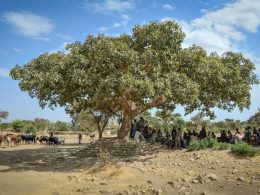The Financial Stability Board (FSB) released an overview of initiatives by member financial authorities regarding the identification and evaluation of nature-related financial risks. This overview named ‘Stocktake on Nature-related Risks: Supervisory and Regulatory Approaches and Perspectives on Financial Risk’, set to be presented at the G20 Finance Ministers and Central Bank Governors meeting on July 25-26 in Rio de Janeiro, covers not only supervisory and regulatory measures but also the analytical efforts by central banks and supervisors to assess whether and how nature degradation, including biodiversity loss, poses a financial risk.
A key observation highlighted in the report was that financial authorities are at varying stages of evaluating the significance of biodiversity loss and other nature-related risks. Their approaches differ, partly due to varying mandates. Some authorities have determined that these risks are material, while others are still monitoring international developments. A few have opted not to address this issue yet due to data limitations and the need to prioritise climate risks, where data and analytical frameworks are more developed.
The financial authorities examining the issue categorised nature-related risks into the same two types used for climate-related financial risks: physical and transition risks. However, there are significant challenges related to data and modeling. Current analytical work shows that financial institutions have substantial exposure to physical risks through their investments and financing activities, but further development is needed to translate these exposure estimates into concrete risk measures. Authorities acknowledge the close link between climate risk and nature and agree that a more comprehensive approach is required to address the interdependencies between climate and nature-related financial risks.
Another observation in the report was that regulatory and supervisory efforts globally are still in their early stages and vary widely among jurisdictions and institutions. Despite this, several authorities from both emerging and advanced economies have initiated regulatory and supervisory measures.
The report cites examples from international organisations and authorities and highlights the need for more expertise in the supervisory community, central banks, and the private sector to understand and address nature-related risks. There are various capacity-building initiatives underway worldwide.





















